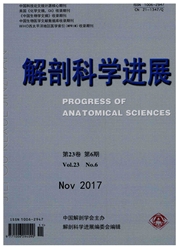

 中文摘要:
中文摘要:
目的构建GST-hSesn2融合蛋白表达载体,并在大肠埃希菌(E.coli)中诱导表达。方法从COS-7细胞中提取mRNA,反转录为cDNA。用PCR方法扩增出hSesn2基因全长,通过BamHI和SalI酶切位点将其定向插入pGEX-4T-2载体中,构建原核表达质粒pGEX-4T-2-hSesn2,并转化E-coliDH5a,通过限制性内切酶酶切电泳和DNA测序鉴定正确后,转入E.coliBL21中,经异丙基硫代B-D半乳糖苷大量诱导表达,SDS-PAGE电泳和Westernblot鉴定。结果酶切电泳及测序结果证明,成功构建了原核表达质粒GST-hSesn2,并用Westernblot方法证实了GST-hSesn2融合蛋白在原核细胞大肠埃希菌中阳性表达。结论GST-hSesn2原核表达载体成功构建为进一步纯化Sesn2及研究其结构与功能提供了前提基础。
 英文摘要:
英文摘要:
Objective To construct GST-hSesn2 fusion protein expression vector and induce its expression in prokaryotic cells of Escherichia coli ( E.coli ) . Methods Total mRNA was extracted from COS-7 cells, and eDNA was formed by reverse transcription. The hSesn2 coding sequence was amplified by polymerase chain reaction(PCR) and subcloned into pGEX-4T-2 vector. The positive recombinant was identified by restriction enzyme digestion and DNA sequencing. Then they were transformed into E.coli BL21, induced by IPTG and identified by SDS-PAGE and Western blot. Results The prokaryotic expression plasmid pGEX-gT-2-hSesn2 was successfully constructed and confirmed by enzyme digestion and sequencing, GST-hSesn2 fusion proteins were expressed positively in prokaryotic cells of Escherichia coli by Western blot. Conclusion The successful construction of prokaryotic expression plasmid of hSesn2 would provide the basis for the further research on purifying Sesn2 protein and the biological function of Sesn2.
 同期刊论文项目
同期刊论文项目
 同项目期刊论文
同项目期刊论文
 期刊信息
期刊信息
